Nestled along the Eastern Coast of Cebu Island, my city is shielded by the protective embrace of both Mactan Island and the Cordillera Central Mountain range. It stands proudly as one of our country’s largest urban centers, adorned with a treasure trove of relics harking back to the Spanish Colonial Era. Noteworthy among these famous historical landmarks are the Cross of Magellan and the Basilica Del Santo Nino , each serving as tangible reminders of the enduring legacy of Spanish occupation in our region.
As a nation, we treasure our rich history, profoundly shaped by centuries of foreign invasions that have left an indelible imprint on our culture, beliefs, religions, and culinary traditions. Among these influences, Spanish colonization holds a significant place, leaving a lasting impact on various facets of Filipino life that resonates even today. And in Cebu City, where I reside, this historical interplay is palpable.
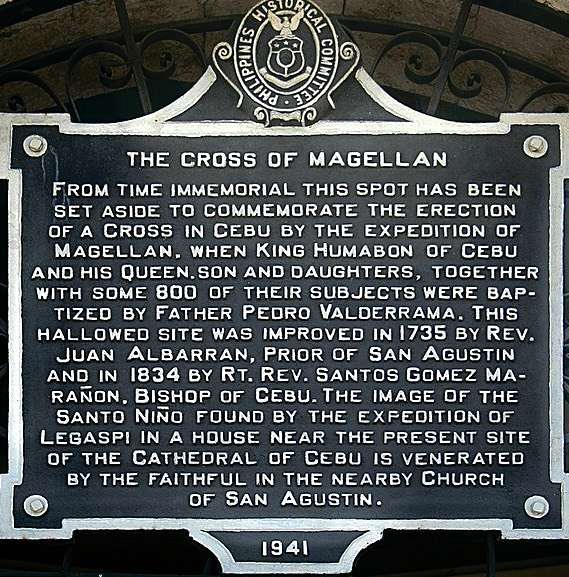
Table of Contents
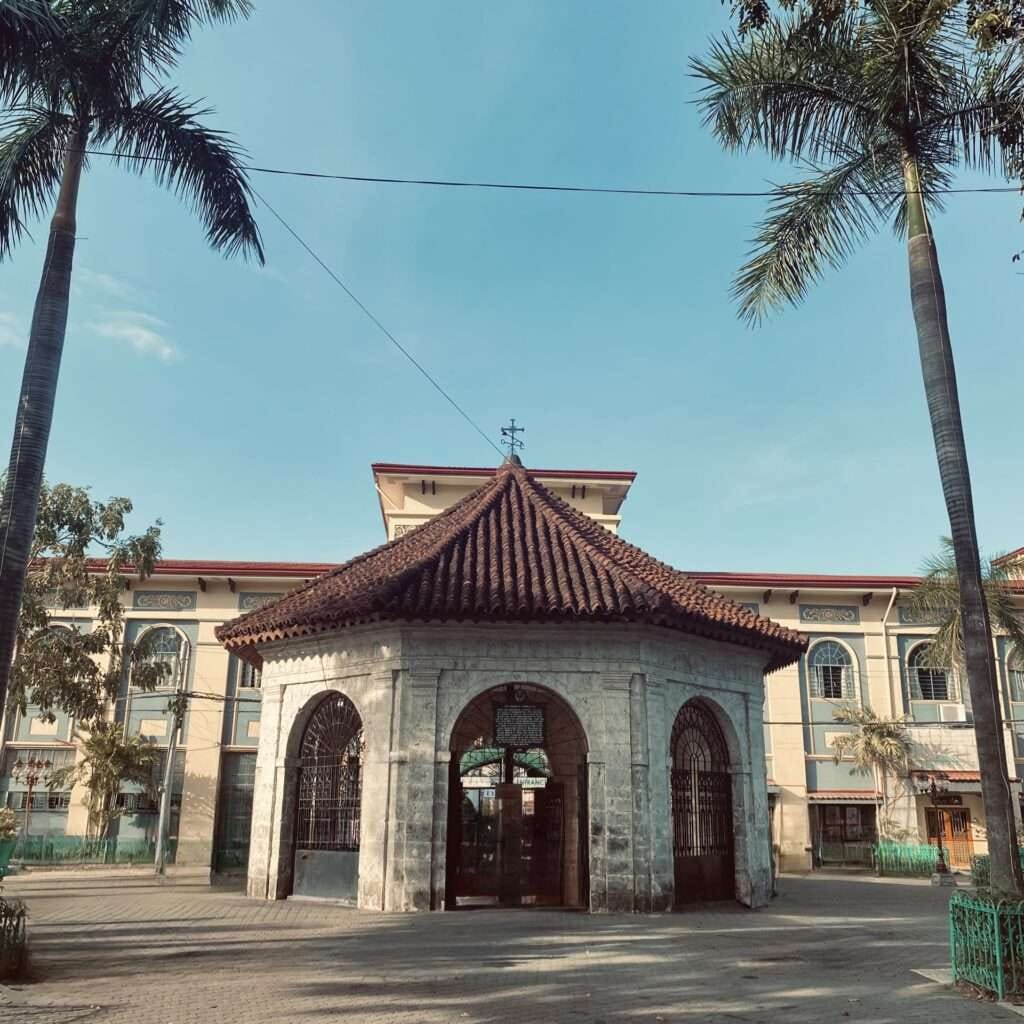
Historical Significance of the Cross of Magellan in Cebu
The Magellan’s Cross is housed inside an octagonal pavilion with a stone kiosk in Cebu City, Philippines. It is a large wooden cross housed in a small chapel located near the Basilica Minore del Santo Niño, one of the oldest Roman Catholic churches and most famous historical landmark in the Philippines. It is a significant historical landmark symbolizing the arrival of Christianity in the country. The cross is believed to have been constructed by Spanish and Portuguese explorers led by Ferdinand Magellan on April 15, 1521.
As Ferdinand Magellan embarked on his famous expedition, known as the Magellan-Elcano circumnavigation, with the intent of finding a westward route to the Spice Islands (modern-day Indonesia) for the lucrative spice trade. However, during his journey, Magellan stumbled upon the pristine shores now known as the Philippines.
Magellan’s expedition landed on Homonhon island on March 16, 1521, marking the first recorded European contact with the islands. Subsequently, Magellan and his crew landed in Cebu on April 7, 1521, where they met king Rajah Humabon of Cebu, the ruler of the island. Magellan and Humabon formed an alliance, and as part of their agreement, Magellan introduced Christianity to the islanders. Magellan and his crew conducted the first Catholic Mass in the Philippines near the site where the current Cross of Magellan stands.
This historic event culminated in the planting of the Cross of Magellan, signifying the arrival of Christianity and initiated the spread of Christianity throughout the Philippines, which eventually became a significant aspect of Filipino culture and identity.
Furthermore, the first baptism of Raja Humabon marked a significant moment in Philippine history, symbolizing the intersection of indigenous culture and European colonialism. As the paramount ruler of the island of Cebu, Raja Humabon played a pivotal role in the early stages of Spanish exploration and colonization in the archipelago. His decision to convert to Christianity, along with his wife and subjects, at the hands of the Spanish expedition led by Ferdinand Magellan, signaled a momentous shift in religious and cultural dynamics.
On the other hand, Ferdinand Magellan’s death was the end of his big journey. He was trying to find a new route to the Spice Islands, but things didn’t go as planned. In 1521, he got into a fight with local people on Mactan Island, led by a chief named Lapu-Lapu. Magellan got hurt badly in the battle and died. His death showed how tough it was for foreigners to come to the Philippines and try to take control. Even though he didn’t make it, Magellan’s journey still inspires people today.
Over time, the original Cross of Magellan has undergone several transformations, primarily due to deterioration and efforts aimed at preservation. To protect it from further decay and preserve its historical significance, the current cross is now protected in tindalo wood and housed within a concrete structure. This combination of materials ensures both durability and longevity, allowing future generations to continue appreciating this iconic symbol of Philippine history.
Today, the Cross of Magellan is not just a relic of the past; it is a vibrant symbol of Filipino heritage and faith. Visitors from all levels of society come to pay their respects, connect with history, and to marvel at the profound impact that one small wooden cross has had on an entire nation. It is a reminder of the power of belief, the resilience of cultures, and the enduring spirit of exploration that transcends time and boundaries.
Sign of the Cross and Parts of the Cross
Sign of the cross,
The sign of the cross is an ancient Christian gesture involving touching the forehead, chest, left shoulder, and right shoulder while invoking the Holy Trinity. Originating in the 3rd century, it symbolizes Christ’s redemptive death and is used in liturgies, prayers, and moments of need, signifying believers’ identification with Christ and invoking divine protection and grace.
Foot of the Cross: The “foot of the cross” refers to the bottom part of the cross, where it touches the ground or the base it stands upon. In religious contexts, it symbolizes the physical location where Jesus Christ was crucified, known as Golgotha or Calvary. The foot of the cross holds significance as a place of suffering, sacrifice, and redemption in Christian theology.
Base of the Cross: The “base of the cross” is the foundation or support structure that holds the cross upright. It provides stability and strength to the cross, ensuring that it remains firmly in place. In religious symbolism, the base represents the stability and steadfastness of faith, serving as a metaphorical anchor for believers in times of trial and tribulation.
Sides of the Cross: The “side of the cross” refers to either the left or right arm of the cross, perpendicular to the vertical beam. It symbolizes different aspects of Jesus Christ’s teachings and sacrifice. The right side represents righteousness, salvation, and divine authority, while the left side symbolizes humility, compassion, and solidarity with the marginalized. Together, they embody the multifaceted nature of Christ’s message and virtues.
The mural painted on the ceiling of the Cross of Magellan
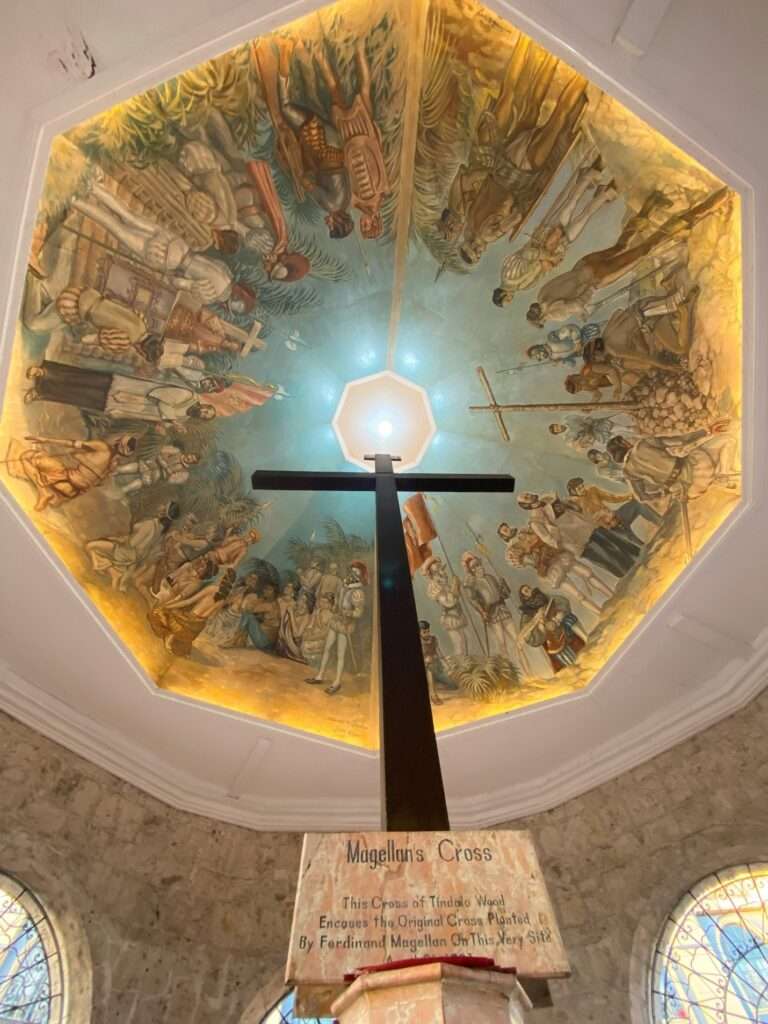
The painting on the wall at the Cross of Magellan in Cebu shows a very important moment from the past. It’s about when Ferdinand Magellan, a Spanish explorer, came to the Philippines a long time ago. The artists’ names are inscribed, they are Jess Roa and Serry M. Josol. The year it was painted is still unknown. However, photographs during the 1965 4th centenary of the Christianization of the Philippines tell that the paintings were already part of the kiosk.
In the painting, you can see Magellan and the local leader, Rajah Humabon, with their friends. They’re having the first Catholic mass in the Philippines. The artists painted this scene well. They made it look like everyone was in a beautiful place surrounded by trees and nature. The people in the painting look serious and respectful. It’s like they’re showing how important this moment was for them.
The painting also has a large christian cross in it, which depicts the Cross of Magellan. This cross is a symbol of Christianity coming to the Philippines. It reminds us of how different cultures met and how they influenced each other. When we look at this painting, we remember the beginning of Christianity in our country and how it changed our history. It’s a powerful picture that helps us understand our past better.
Pray the special indulgence granted to the veneration of the Cross of Magellan
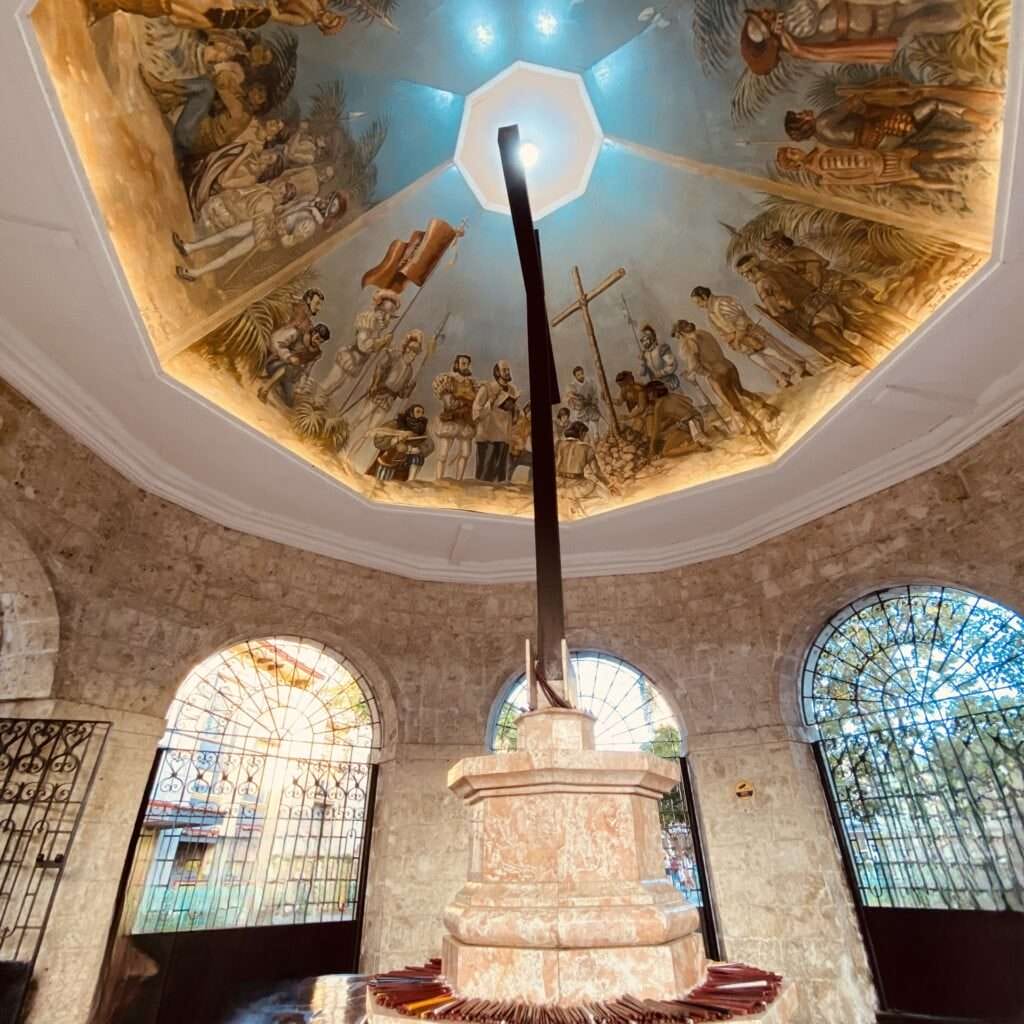
Did you hear about the special blessing for people who visit Cross of Magellan? It is interesting! If you go there and say a prayer on the Feast of the Triumph of the Cross, you can get something called a plenary indulgence. This means you are forgiven for your sins.
So, what do you have to do? Just say one Our Father, one Hail Mary, and one Glory to the Father for the Pope’s intentions in Rome. That’s it! The miraculous power of large wooden do its thing. It is a special favor granted by rev. Santos Gomez Marañon, who was the Bishop of Cebu from 1830 to 1840.
It is a nice way to connect with your faith and feel blessed. If you are ever in Cebu on a special day, do not forget to stop by the Cross of Magellan and say a prayer. Who knows, maybe it will bring you some extra grace!
Location of Magellan’s Cross
The Cross of Magellan is situated in Plaza Sugbo, Cebu city, Philippines, next to Basilica Minore del Santo Niño and in front of the Cebu city hall on Magallanes Street.
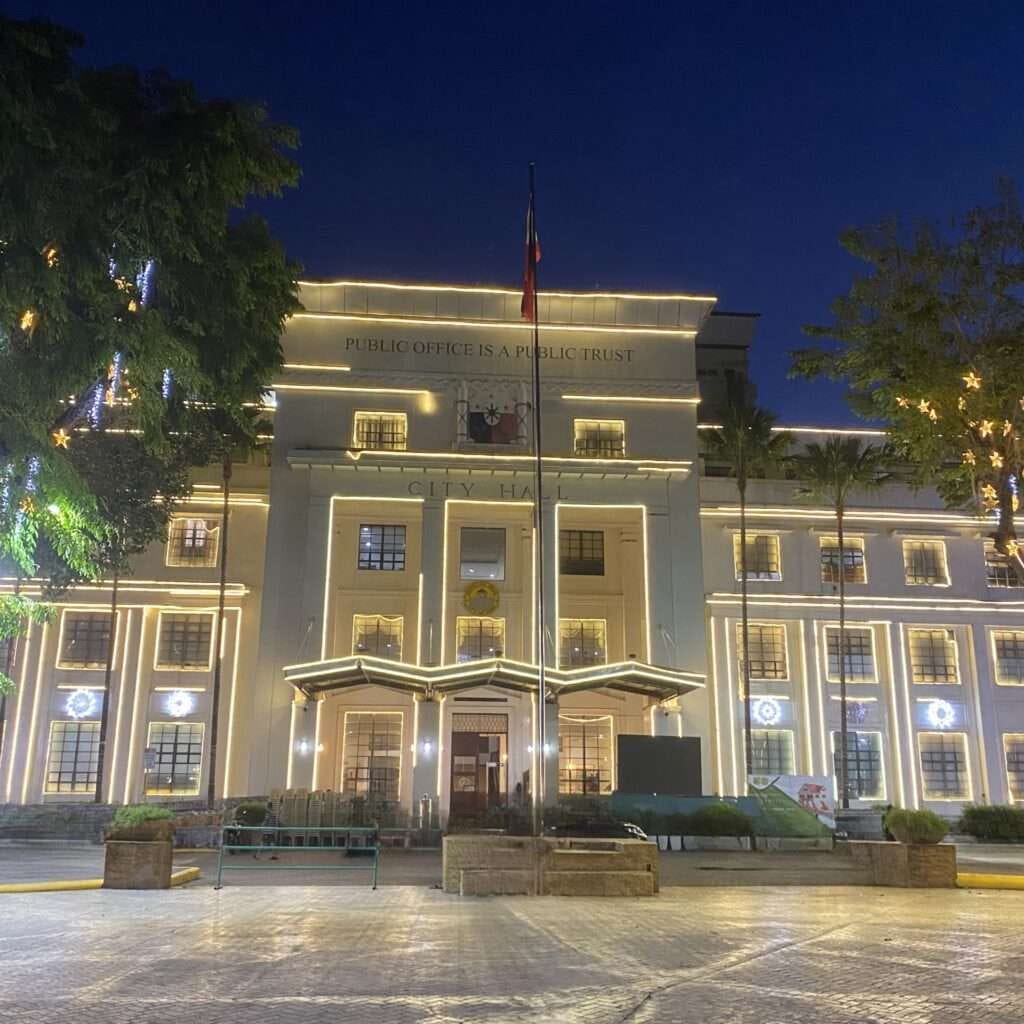
Transportation
- From Mactan airport, you can get a taxi directly to the Cross of Magellan, it will cost you more or less than 302-394 pesos. The yellow airport taxi costs more than regular taxi and Grab taxi. So, stick with the regular taxi to save cash for souvenirs or snacks along the way.
- If you are a foreigner or a tourist, you can book a travel package for a Sugbo Tour in Cebu City.
- For the people living in Cebu, you can take a jeepney from your place to Magellan’s Cross.
Essential Visitor Tips For Visiting Magellan’s Cross
- Do not buy the long candles which are sold by the people around the historical sites because security will not allow you to light them to avoid fire. There are free candles provided inside the church.
- When visiting religious places in Cebu do not wear shorts, miniskirts , sleeveless, or any chest-revealing clothing. Otherwise, security might give you a scarf to cover some of your skin.
- You are not allowed to take pictures or video inside the church when there is an ongoing mass.
- It is open every day, but Sundays are the busiest. It is best to go there on Weekdays around 6:00-7:00am to experience the smallest crowds.
